QuestionHi,
My dear friend of 5 1/2 yrs passed away 2 weeks ago. She was a mini rex. She started having rust colored urine and didn't eat as good as normal. This started on Sat am and by Mon am was gone. She was still eating, just not as much. Her urine also got a gel-like consistency. Any ideas what happened to her? I have beat myself up over and over trying to figure out what happened...it happened so fast and of course on the weekend. I am also looking for another to help ease the pain and was wondering if you knew anything about lionheads and how long they live on average. I am trying to find one that would live longer...as the pain of losing one is HORRIBLE!!!!
Thanks for any help you can send my way.
Blessings,
cathy
AnswerIt sounds like she had a condition called urine sludge here is a little about it and what may cause it
Bladder sludge (also called hypercalcinuria or hypercalciuria) is a thickening of the urine with calcium salts that never form into stones. Sludge may be comprised of any number of calcium salts, and does not flow as normal, liquid urine should. We are not sure why, but sludge does not form stones. It remains the consistency of chalk or fine sand, and is a white to gray color. Very thick sludge can have the consistency of toothpaste. When felt, this sludge can be smooth, have finely granular texture, or even have gritty texture. Sludge can form in the kidneys or ureters, but most sludge is noted in the bladder, and is suspected to have formed there.
At this time, it is not clear why some rabbits form stones, some form sludge, and why most rabbits develop neither stones nor sludge. Most likely, it is a combination of factors that contribute to this pathology. These factors are listed and discussed below. However, I would first like to comment on the rabbit's peculiar physiology with respect to calcium metabolism.
POTENTIAL RISK FACTORS FOR DEVELOPMENT OF SLUDGE OR STONES
Genetic predisposition to stone production by that particular rabbit; this is hypothesized, but scientifically untested.
Insufficient water intake by the rabbit. This could be caused by lack of water (water bowl overturned, water frozen, rabbit doesn't know how to drink out of a water bottle, water bottle defective) or water that has a bad taste or smell (contaminated, has medications or vitamins added). This can also be caused by lack of exercise (see next factor). This causes a state of chronic, low-level dehydration and may result in more concentrated urine leading to the possibility of sludge or stone formation.
Inactivity leading to less frequent urination. The inactive rabbit that sits all day in a cage may not drink as frequently or urinate as frequently leading to more concentrated urine. An inactive rabbit might sit in one spot and thus the urine also sits and there is more opportunity for calcium crystals to coalesce. An active rabbit will consume more water and urinate more frequently.
Lack of appropriate toilet area. Some rabbits are very fastidious and if they are confined in a small space and the toilet area is not kept clean, they may tend to hold the urine longer and thus urinate less frequently. This could cause similar problems as mentioned under Inactivity.
Kidney disease may cause a change in the way calcium is excreted or handled. A variety of diseases can affect the kidneys, including parasitic, infectious and non-infectious.
Bladder disease may cause a change in the lining of the bladder, causing calcium carbonate to accumulate and form stones or sludge. Infections, tumors and benign growths can cause inflammation of the bladder wall.
Diet high in digestible calcium? For many years, veterinarians have believed that dietary calcium content was important in the development of bladder stones and sludge. For this reason, and because so much about this condition is not known, we have emphasized dietary changes directed toward reducing calcium intake for affected rabbits. Based on what we now know, it can be stated that dietary changes alone will NOT reduce the formation of stones or sludge in rabbits prone to this condition. Several scientific studies in which rabbits were fed huge amounts of digestible calcium for months (far more than a pet rabbit would ever get even on a completely commercial diet) have demonstrated that these rabbits failed to develop stones or sludge. So I don't believe that diet ALONE is ever the entire problem.
SIGNS OF BLADDER STONES AND SLUDGE
Early in this disease there may be very few signs, or the signs may be so subtle as to be undetected by the rabbit's caretaker. As the disease progresses, any combination of the following may be seen.
Urinating more frequently than usual and often outside the normal toilet area. Frequent inappropriate urination (especially "spraying" urine on vertical surfaces) can be seen as normal behavior in sexually mature intact male and female rabbits that are marking their territory. However, a rabbit that is experiencing bladder problems will usually not "spray" the urine on vertical surfaces, nor seem particularly interested in marking out a territorial boundary or certain items in a room. Occasionally a rabbit will be observed to "dribble urine" without knowing it and the hindquarters may be continually damp with urine. Please be aware that there are other diseases that can lead to urine staining of the hind quarters including sore hock, spinal disorders (arthritis, injuries, nerve damage), obesity (can't clean the hind quarters) and reproductive disorders.
Straining to urinate. The rabbit takes longer than usual to pass a smaller than usual amount of urine. This straining behavior is frequently mistaken for constipation. True constipation is extremely rare in the rabbit. Occasionally the straining can be so painful that the rabbit will cry out or moan when urinating, although this is rare. You should consider it an emergency if a rabbit is continuously straining without producing urine. This indicates that there may be a complete blockage of the urethra (the tube the urine flows through out of the bladder) and if this is not corrected it could result in the pet's painful death within 24 hours.
Blood in the urine. Normal rabbit urine can range in color from a light yellow to a deep orange-red (a "rusty" color) due to a variety of plant pigments that may have been eaten or pigments, called porphyrins, produced by the bladder itself. Blood coming from the urinary tract should cause the urine to be a uniform dark to bright red color. Often the amount of blood in the urine is so small it can be detected only by testing with a specially treated paper, or by looking at the urine sediment under the microscope. Unless the rabbit is urinating on a light-colored surface, it is easy for blood in the urine to go unnoticed.
It is important to note that there is another condition that can cause blood to appear during urination and is often confused with bladder or kidney disease. Uterine disease in the female rabbit can result in bleeding into the vagina. The blood collects in the vagina and when the rabbit urinates, the blood is pushed out usually at the end of urination. In these cases, the blood appears as a centrally located pool within the urine puddle. There may also be clots of blood within the urine pool and finally there may be blood staining the area under the tail and hindquarters of the rabbit, which is usually not seen in bladder disease. Please be aware that these signs represent serious reproductive disease, NOT urinary tract disease. The urine will test positive on a chemical analysis for blood if you bring a sample to your veterinarian, and it will be impossible to tell where the blood originated. Therefore, it is critically important that you observe a fresh urine sample for the pattern of coloration. In addition, a complete physical examination by a veterinarian will also help to determine the diagnosis. Of course, uterine disease will occur only in unspayed female rabbits.
Sludge in the urine. Urine that becomes thick with calcium carbonate crystals is not only difficult to pass, but will tend to stick to the fur around the rabbit���s hindquarters. The sludge will leave a noticeable amount of grayish-white residue on the fur and in the toilet area as it dries. This material has the consistency of very fine sand or chalk. Remember that a small amount of this material can be seen in normal rabbit urine as it dries as a consequence of clearing excess calcium from the body. However, in normal rabbits the calcium carbonate should not be accumulating on the fur.
Sometimes larger calcium carbonate particles with the consistency of coarse sand can be passed. In rare instances, the rabbit will void a large stone. If this is observed, the pet should be examined by your veterinarian to determine if additional stones are present in the bladder. Multiple bladder stones are more common than solitary stones.
Urine scald. Some rabbits with hypercalcinuria will develop a skin rash around the area where they void urine and along the belly and inner thighs. This is related to prolonged contact of urine with the skin. Any rabbit with persistently wet hair or rash in these areas should be evaluated for urine sludge or stones.
Loss of appetite and depression. This sign usually occurs because of pain due to the pressure, size or location of the stones, or because there is a complete blockage of the urethra. If there is blockage of one or both ureters the rabbit can quickly develop kidney failure which will result in severe depression and death within a short time. Loss of appetite and depression should always be considered an emergency in a rabbit, regardless of the suspected cause, and you should contact your veterinarian immediately.
It goes without saying that if you see any of the above signs in your rabbit that you should contact a veterinarian immediately. If you can collect a urine sample prior to your visit, this may be helpful. (Please see section below on urinalysis for directions on how to collect the sample).

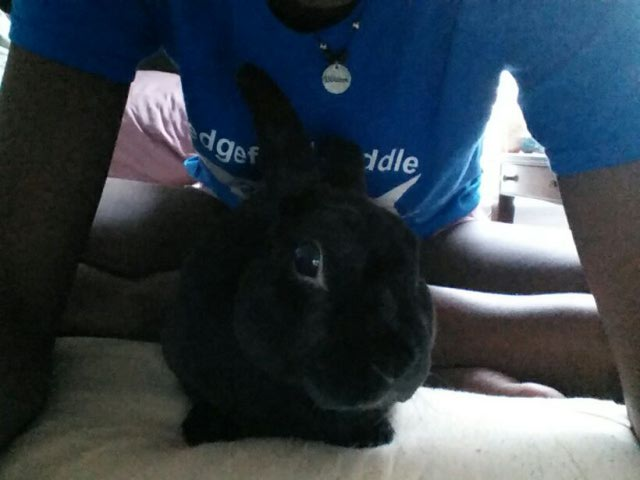 Buzz
Question
Buzz
I spank my bunny but he got afraid
Buzz
Question
Buzz
I spank my bunny but he got afraid
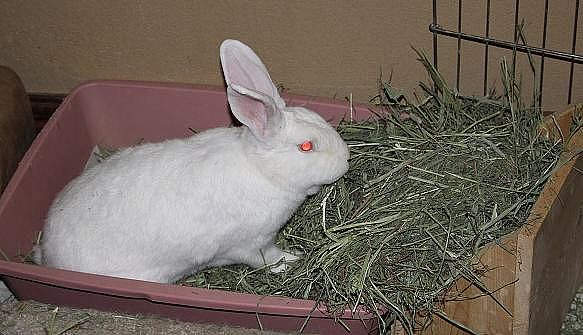 reply
Questionpregnant rabbit like s
QUESTION: she eat
reply
Questionpregnant rabbit like s
QUESTION: she eat
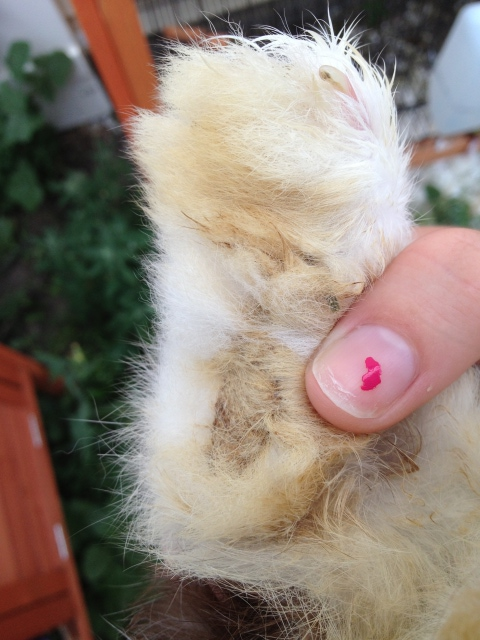 Possible Sore Hock HELP
Question
foot
I bought this rabbit in June.. He
Possible Sore Hock HELP
Question
foot
I bought this rabbit in June.. He
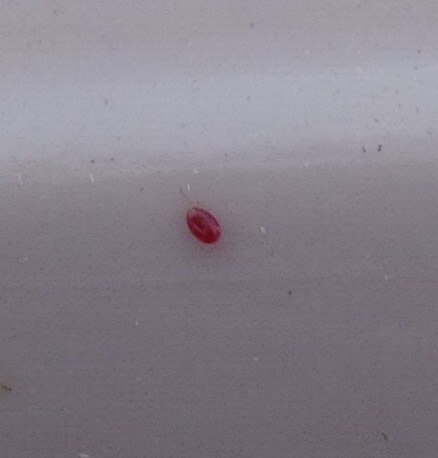 Red bugs on my rabbits
Question
Red bug/mite found on
I found several
Red bugs on my rabbits
Question
Red bug/mite found on
I found several
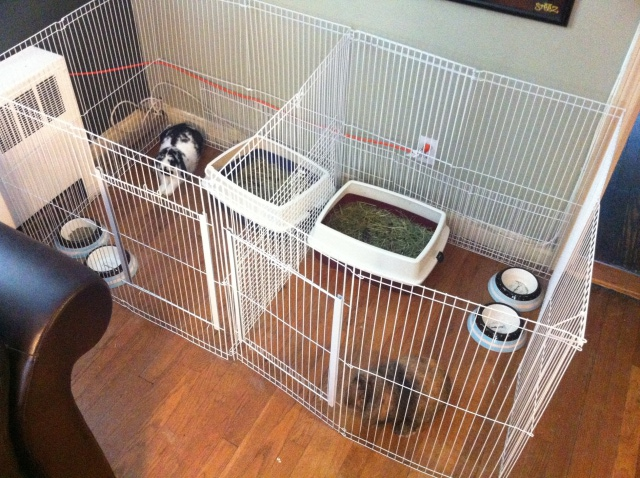 Attitude problems! (Photo attached)
Question
Rocko/Spunkys home
Hi, my name is Nicol
Attitude problems! (Photo attached)
Question
Rocko/Spunkys home
Hi, my name is Nicol